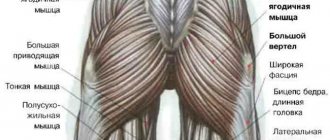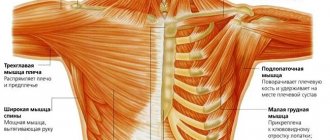Let's start with the fact that you can get rid of fat in a week. Yes, we approve. Yes, it's that simple. No smart words or abstruse advice from nutritionists who only work for them. In this post, the editors of Bow&Tie will talk about how to get rid of fat for you personally. Our advice will help in 100% of cases any person who does not have hormonal disorders. They helped us. And absolutely everyone who tried them, too.
Fat breakdown is a chemical reaction, and Bow&Tie will tell you how to start it.
Nutrition rules - following them, you will lose weight
Nothing in the human body comes from nowhere and goes nowhere.
The less often a person eats, the more the body does to reduce energy loss. In addition to the lack of effect (weight loss), a person experiences weakness and gets tired quickly. The solution to a slow metabolism is to eat fewer calories, but eat more often. We divide the daily calorie requirement into 5-7 meals during the day. In this case, the body will not respond to a decrease in caloric intake, since it will understand that it is not in danger of prolonged fasting.
The following nutritional algorithms will help you.
Fractional meals
The principle of fractional nutrition is maintaining a balance of proteins, fats, carbohydrates, vitamins and minerals while reducing daily caloric intake. To do this, food is divided into 5-7 meals.
Let's give an example of a nutrition schedule and products that were personally tested in practice and gave a positive result at the rate of 1,500-2,000 kcal per day:
Carbohydrates:
- rice, buckwheat, oatmeal and pearl barley, etc. – 100-250 grams (start the day with the largest portion and eat everything before 15:00, otherwise the body will not have time to spend it).
Proteins:
- boiled chicken breast – 400-500 grams (save for at least one evening meal);
- boiled eggs – 3-5 pieces (also leave 1-2 for the evening);
- low-fat cottage cheese – 200 grams (eat at the last meal);
- low-fat kefir - 1 glass (also at the last meal).
Fiber is vegetables, you can eat them within reason (but at the last meal - only cottage cheese and kefir). Fats – we suggest betting on fish oil capsules (Omega-3). Drink at least 3 liters of regular, still water per day.
After a week of eating like this, weigh yourself. If:
- Nothing happened or you gained weight – no big deal. This means you consumed as many calories as you burned, or more. Reduce your diet by 50-100 grams of carbohydrates.
- We lost 1-1.5 kilograms - great, the fat is disappearing.
- Losing 2 or more kilograms of weight is very bad, not only fat is lost, but also muscle. Add 50-100 grams of carbohydrates to your diet.
Weigh yourself weekly and monitor your diet so that you do not lose more than 1.5 kilograms during the week. Next, if you want, diversify your diet by calculating calories using any calorie tables.
Optimal duration and frequency of training per week
Depending on the level of fitness, the following optimal frequency of cardio training for fat burning is distinguished:
- Beginners – 2-3 times a week
- Intermediate level – 4-5 workouts per week
- Advanced level – up to 6 workouts per week
The optimal duration of one cardio workout is 30-60 minutes.
Beginners are recommended to start with exercises of 10-15 minutes, gradually increasing the duration by 3-5 minutes at each workout.
Remember that when changing the load, you are guided by your own feelings and the speed of recovery, which is individual for everyone.
Cyclical no-carbohydrate diet

The essence of the diet is eating in cycles. We exclude carbohydrates from the diet for 2-5 days, and then eat only carbohydrates for 1-2 days (so that the body does not switch to a slow metabolism).
Be sure to weigh yourself every day and record your results to determine when the weight will stop coming off. This is important: most often the metabolism slows down for 3-4 days, but this is not true for every organism.
We suggest starting with the system: 3 days - no carbohydrates, 1 day - only carbohydrates. Next, if you feel good and the weight is coming off, increase the number of days without carbohydrates. If you feel bad, reduce the number of days without carbohydrates and increase the number of carbohydrate days.
Days without carbohydrates:
- boiled chicken breast or fish – 500-600 grams;
- boiled eggs - 10 pieces;
- low-fat cottage cheese – 300 grams;
- vegetables – 400-500 grams.
Carbohydrate days:
- rice, buckwheat, oatmeal and pearl barley, etc. – 100-250 grams;
- Protein and fiber – within reasonable limits (i.e. don’t overeat).
This diet is considered the most effective, but is not suitable for everyone. If you do not have time to restore strength during carbohydrate days, you feel lethargic and powerless, add chocolate or honey to your cereal. If this doesn't help, this diet is not for you.
Circuit training program for burning fat

Circuit training is the best way to combine endurance and strength exercises. Circuit training is performed by men in the gym. The main goal is not to take breaks between exercises. All strength exercises, not counting abdominal exercises, are performed for one minute, with the exception of cardio exercises (biking or running) which are performed for three minutes.
Circuit training plan for fat burning:
- Perform a push-up or bench press exercise.
- Squats with a barbell.
- Lat pulldown or pull-up.
- Jog or ride an exercise bike for three minutes.
- Barbell press in the starting position while standing.
- Lunges forward with a load (barbell or dumbbells), performed for one minute for each leg.
- In the starting position, standing, perform a biceps lifting exercise.
- Do the exercise again on an exercise bike or jog for three minutes.
- Load on the triceps when performing a pulley task, arm extension.
- An exercise is performed on a leg extension machine.
- In the starting position lying down, leg bends are performed.
- We perform the “prayer” exercise for two minutes.
- In the initial lying position, twisting is performed, also performed for two minutes.
The total time for performing circuit training is about twenty minutes.
Fat burning is catalyzed by taking no breaks during exercise. If you think that a twenty-minute workout is not enough for you, then you can take a short break for 2-5 minutes and repeat the complex again, in which case the total time will be 42-45 minutes. A good change of exercises helps you rest between sets throughout your workout. And changing strength exercises to cardio, running on a treadmill or an exercise bike, will help relax the cardiovascular system and keep the trainee’s pulse normal. These features of circuit training help you burn more energy in less time and burn fat faster. The best option would be to train 2-4 times a week, however, if you have the time and desire, then training can be done daily, this will speed up the achievement of the desired result.
If you don’t have money for proper nutrition and diets
The above diets cannot be classified as budget ones. Another option is to distribute your own standard daily meals into 6-7 meals a day. A week after weighing, determine the results.
If you gain weight or remain at the same level, reduce carbohydrates by calculating your nutrition using any calorie table. If you have lost more than 1.5 kg, add carbohydrates or, for example, eat a chocolate bar a day. If you have lost 1-1.5 kg, everything is great.
Cardio training for weight loss at home and outdoors

Cardio training - walking, jogging, swimming, cycling, exercise on an exercise bike, jumping rope, etc. There are two sources of energy in the muscles:
- Glycogen is the carbohydrates that are burned first. It lasts on average 40 minutes.
- Fat is not subcutaneous, but muscle fat. It is spent either when glycogen is released, or when slow muscle fibers are involved. It also lasts for 40 minutes on average.
During such cardio exercises the following happens:
- fat “burns” (first glycogen, then fats from the muscles, and when they come out, subcutaneous fat is “wasted”);
- blood circulation increases;
- the cardiovascular system is strengthened.
The overall endurance of the body also increases.
Cardio training outdoors
Cardio workouts are divided into high-intensity (very fast running, fast cycling) and low-intensity (fast walking). The more intense the load, the more carbohydrates are burned and the less fat is burned. With low intensity (when slow muscle fibers are involved), on the contrary, fat immediately “burns”.
Does this mean that brisk walking is more effective than running in burning fat? On the one hand, yes. But on the other hand, the more intense the load, the more energy (calories) will be spent during recovery. That's why:
- High-intensity cardio training will help you quickly “burn” fat, but with additional stress.
- low-intensity cardio workouts will also help “burn” fat, but more slowly.
Therefore, if time is not critical, or if you do strength training, you can avoid exposing yourself to additional stress and preserve muscle (more on this below).
Cardio training at home
We perform cardio training at home with an open window and in a well-ventilated room (so that the body is saturated with oxygen, and oxygen oxidizes fat in the body). The following exercises are suitable:
- riding an exercise bike;
- jumping rope;
- rotation of the hoop;
- slow running in place;
- gymnastics.
You need to do cardio training at home for at least 40-50 minutes without a break, in a ventilated area, while monitoring your pulse (more on this below).
Cardio workout at home
So, enough talk, let's get to action. Below are 5 exercises that must be performed in the order in which they are shown. These are fairly simple exercises and you won’t need much time to master them. Your main task is to do all the exercises as quickly as possible, but at the same time, do not forget about technique. Choose the optimal speed, but the faster you go, the more your fat will hate you. And after a month of training, he will become seriously offended by you and leave forever.
Explosive push-ups
We stand upright lying down. We lower ourselves down, as with regular push-ups, then push with all our might from the floor, so that your palms come off it. Then land softly back to the starting position.

Over time, make push-ups more difficult by adding a clap the moment your hands leave the floor. Do 15 repetitions and move on to the next exercise.
How to combine cardio and strength training for weight loss - options for beginners and amateurs

We suggest considering two options for combining cardio + strength. Option number 1 – for those who have time to train:
- Step 1 – 40-50 minutes of low-intensity cardio training (muscle fat goes away).
- Step 2 – 20-50 minutes of strength training to trigger lipolysis with the help of stress and anabolic hormones.
- Step 3 – 1 hour of rest (to allow blood flow to deliver fat to muscles).
- Step 4 – repeat steps 1 and 2.
Option number 2 – for people who don’t have time:
- Step 1 – 40-50 minutes of low-intensity cardio in the morning. For example, walking at a brisk pace on an empty stomach (muscle fat goes away + in the morning there is not so much “own” fat in the muscles).
- Step 2 – 40-50 minutes of low-intensity cardio training before strength training (muscle fat goes away).
- Step 3 – 20-50 minutes of strength training to trigger lipolysis with the help of stress and anabolic hormones.
- Step 4 – 40-50 minutes of low-intensity cardio after strength training (for example, a brisk walk home).
You can add low-intensity cardio training whenever possible.
Cardio training program for burning fat in men
With the help of cardio training, the metabolic process is accelerated as a result of increased stress on the cardiovascular system and active ventilation of the lungs.
The essence of cardio training is alternating the most active exercises, a short rest and again an active load. The main exercises in this type of training are sprinting (running), interval training performed in the gym, step aerobics and similar types of exercises.
The optimal exercise regime for burning fat for men is training 3-4 times a week for 30-45 minutes; short daily cardio training is also carried out to maintain your body in the desired shape.
How and why to monitor your pulse

You need to control that the pulse level within 110-160 beats per minute (true for young, healthy people, deadly for the elderly) will allow the body to be saturated with oxygen, which will oxidize fats. If the pulse drops to 60-90 beats per minute, the body will begin to “burn” not fat, but glycogen.
The maximum permissible heart rate level for your body can be calculated using the formula 205.8 - (0.685 x the number of years lived) = round the result down to whole numbers. Thus, for a 30-year-old man, the maximum allowable heart rate is 185 beats per minute, so a range of 110-160 is acceptable.
We are waiting for you in the comments. We will try to answer questions and help.
Rules for safe training
To ensure that exercise does not harm your health, you need to pay attention to the work of the heart, breathing and general well-being.
Pulse
The main rule for safe cardio training in the gym is monitoring cardiac cycle indicators. The pulse should not exceed 80-85% of the maximum values.
To calculate them, use the formula:
220 - (athlete's age) = maximum allowable heart rate.
If the indicator during exercise does not exceed 65% of the maximum heart rate, then the training will be ineffective.
It is recommended to measure your pulse every 4-6 minutes of training. However, there is no need to reduce its intensity during measurement.
You can count your pulse yourself by palpating the cervical artery with two fingers for 10 seconds and multiplying the result by 6.
If your heart rate is too high, you should gradually reduce the load to the recommended level. Sudden stops are prohibited.
So for a 30-year-old athlete, the heart rate indicators will be as follows:
| Below normal (training will not bring results) | Norm | Above normal (load needs to be reduced) |
| Less than 123 beats per minute | 130-150 beats per minute | More than 160 beats per minute |
Breath
The basic rule is that breathing should be comfortable, deep and uniform. If the pace is lost, you should gradually reduce the load.
When exercising on a treadmill, experts recommend sticking to the 2:2 system. Two steps are taken while inhaling smoothly, two more while exhaling. Depending on individual characteristics, the system can be adjusted to 3:3 or 4:4.
During exercises, inhale should occur when bending, exhale after straightening the body.
An important rule: inhale through the nose, exhale through the mouth.











